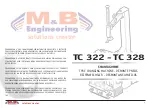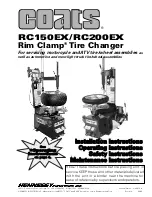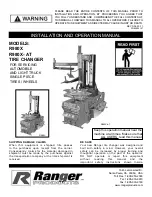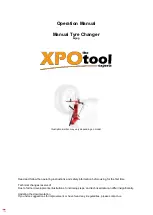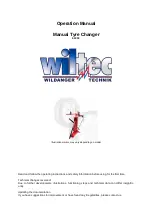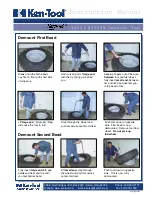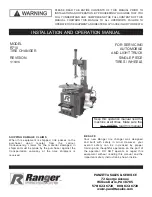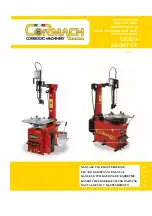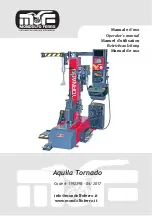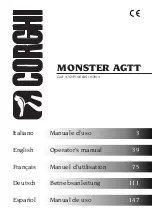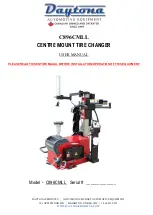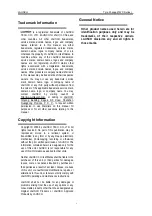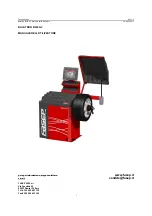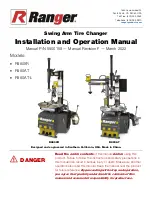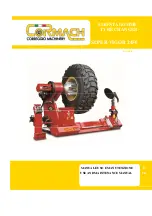
G.
It will be easier to outside clamp the wheel to the
table top if the long side of the rim is loosened last.
4. Apply tire manufacturer’s approved rubber lubricant
liberally to entire circumference of both tire beads after
loosening (figure 5).
5. Determine the mounting side of the wheel. The mounting
side is the narrow side of the drop center. See figure 2 for
more information on the drop center.
6. Place tire/wheel assembly on table top with mounting
side up (figure 6). Use the clamp control pedal to move the
clamps inward (push pedal down) or outward (toggle pedal
up). Clamp steel wheels from the inside (clamps push out-
ward against wheel). Clamp mag and custom wheels from
the outside (clamps push inward against the outside rim
edge). Refer to the Custom and Special Wheels section.
7. Move the swing arm into position. Pull the locking handle
forward to release the slide. Push down on the top of the
vertical slide to move the demount head into contact with the
rim edge. Push the locking handle back and lock the slide into
place (figure 7).
Figure 7 - Position
Mount/Demount
Tool
8. The mount/demount head should be in contact with the rim
edge. Turn the swing arm adjusting knob to move the mount
demount head away from the rim 1/8 to 1/4 inch (figure 8).
9. Check metal head positioning. Mount/demount metal
head should be positioned with 3/16 to 1/8 inch clearance
between the top of the rim edge and the bottom of the head,
and 1/8 to 1/4 inch clearance between the rim edge and the
head roller. This clearance will be maintained as long as the
locking handle and adjustment knob are not changed. The
operator may swing the arm out of the way and back into
place again without needing to reposition the head (when
changing a like set of wheels) (figure 9).
Figure 4 - Position Tire and Bead Loosener Shoe With Wheel
Turned Around
Figure 5 - Apply Rubber Lubricant to Tire Beads
Figure 6 - Place Tire/Wheel Assembly on Table top
Figure 9 - Proper (Metal) Mount/Demount Head Position













